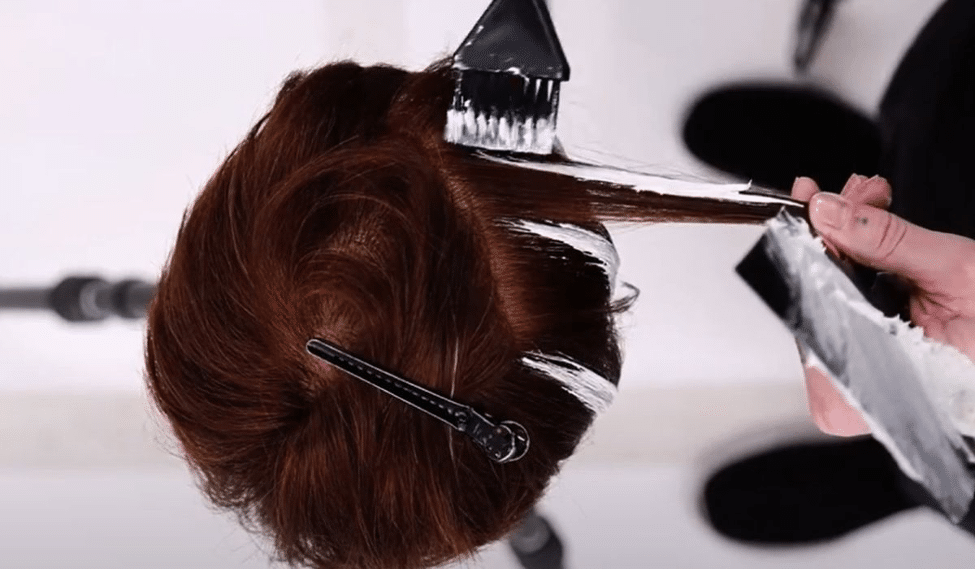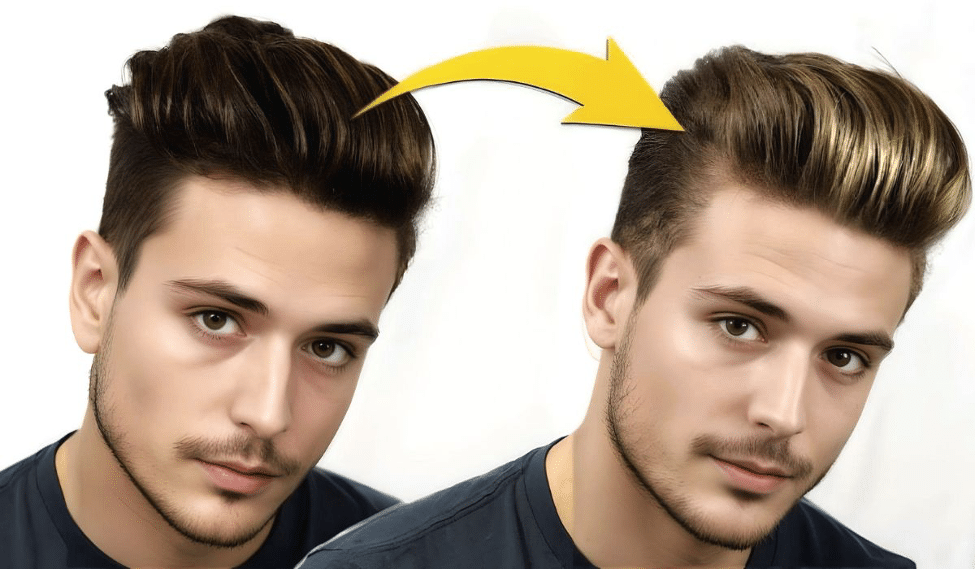Let’s talk about hair coloring. Do you or your client have a full head of natural hair or do you wear a hair system? The rules of hair coloring game for these two are a bit different. Don’t sweat it—I’m here to break it down in a fun, easy way.
Natural Hair: The Wild Child of Hair Coloring

Natural hair is like that friend who can bounce back after a wild night out. It’s resilient, full of life, and can handle a bit of abuse when it comes to hair coloring. The scalp produces oils that protect the hair, and the strands can heal over time, especially with regular trims. You can lighten it, darken it, highlight it—whatever you fancy, really.
For natural hair, the dye or bleach penetrates deep into the hair shaft. So the actual pigment inside the shaft changes. Permanent dyes, semi-permanent dyes, and even bleaches can be used to get that perfect color. But, always remember that bleach can be rough on your hair if you overdo it.
The Perks of Coloring Natural Hair
With coloring natural hair, we can break it down into three to help you easily grasp it.
- Flexibility: You can go as light or as bold as you want.
- Repairable: Made a mistake? No big deal—your natural hair will grow out, and you can always fix it with a touch-up or a new cut.
- Oil Production: Your scalp’s natural oils help maintain moisture, making it easier to manage post-dye dryness.
But hey, don’t get too cocky! Overdoing it with chemical treatments or heat can still damage natural hair.
Hair Coloring Techniques for Natural Hair
I guess we’ve all known pretty well the difference between hair systems and natural hair. Now let’s learn how to color them, starting with natural hair coloring.
Highlights
Want to add a little dimension to your hair without going full dye? Highlights are the way to go, especially men’s highlights, which suit every hairstyle. For natural hair, stylists often use a balayage or foiling technique to create natural-looking streaks of lighter hair. Think soft caramel tones or sun-kissed blondes. Perfect for summer, right?
Also Read: Hair Highlights for Men: A Complete Guide
Full Color
Feeling bold? Full-color changes are all about taking the plunge.
Which one do you like? Brown or blonde? Full color gives you or your client a whole new look. Be prepared for regular touch-ups, especially if you want to cover up grays.
Gray Coverage
Speaking of grays, if they’re starting to creep in, hair coloring can give you that youthful look back. Most guys opt for a natural brown or black to keep things subtle.
Hair Systems: Handle with Care

Now, hair systems—these are a whole different ball game. Unlike natural hair, hair systems don’t regenerate, and they don’t produce those lovely natural oils to keep the strands moisturized. From lace-front, a full lace system, to a poly one, you have to put your heart and mind into it.
Here’s the deal: most high-end hair systems are made from human hair, and a lot of them are synthetic ones. The bad news? You can’t dye synthetic hair—don’t even try it! It’ll end in disaster. The good news is that you can dye human hair systems, but you’ve got to do it gently.
The dye won’t penetrate the hair shaft like natural hair. So the results may fade faster. Plus, the base material (like lace or PU) can stain if you’re not careful. Not a good look.
Key Differences in Dyeing Hair Systems

Here are a few key things to remember when dyeing hair systems (you know I’m talking about human hair ones).
- Fragility: Compared to natural hair, hair systems are more delicate and easier to damage, so go easy on the bleach!
- Limited Lightening: It’s much harder to lighten a hair system than natural hair, so stick to darker shades or subtle highlights.
- Fading: Since the strands don’t produce oils, color can fade quicker, especially if you frequently washing it.
Pro Tip: Always test the dye on a small section first. And if you’re unsure, let the pros handle it. No one wants a ruined hair system!
Hair Coloring Techniques for Hair Systems
Coloring a hair system? You’ve got to be a bit more careful, but don’t worry—it’s totally doable! Here’s how to tackle hair coloring for your hair system without causing chaos.
Go Darker, Not Lighter
With human hair systems, it’s always safer to go darker rather than lighter. Lighter colors indicate that more pigments are stripped off the shaft, leading to weak strands, leaving them brittle and damaged. Stick to colors like dark browns, chestnuts, or even soft blacks for a more natural look.
Avoid Bleach
Bleach is pretty aggressive. Natural hair can handle it (with proper care), but a hair system? Not so much. Bleaching can dry out the strands, and tangling will follow. The hair gets weaker and weaker over time. Dying to go lighter? Then your best bet is to buy a pre-lightened hair system or one closer to the color you want.
Use Semi-Permanent Dyes
Semi-permanent dyes are the friendliest option for hair systems. They don’t penetrate as deeply, so there’s less chance of damage. Plus, they fade gradually, which is perfect for when you’re still figuring out your look.
Hair Care After Coloring: Natural Hair vs. Hair Systems
Once you’ve got your color on point, it’s all about maintenance. Aftercare is different for natural hair and hair systems, so let’s break it down.
Natural Hair
For natural hair, you want to keep the hair moisturized and vibrant. Use sulfate-free shampoos. That will prevent the color from fading. Deeply condition the hair regularly. Oh, and go easy on the heat styling—colored hair is more prone to breakage.
Hair Systems
With hair systems, moisture is key. Our oil will not reach the hair system hair and nourish it. That’s why you need to use leave-in conditioners and hydrating serums to keep the hair soft and manageable. Don’t wash your hair too often. If you have to, use color-safe products. Oh, and skip the heat styling altogether if you can.
Do’s and Don’ts of Hair Coloring
Whether you’re coloring natural hair or a hair system, there are a few universal rules to live by:
Do’s:
- Consult a Professional: Especially for your first time. They know what they’re doing.
- Use Color-Safe Products: They’ll keep your color looking fresh for longer.
- Test the Dye: Do a strand test first to make sure the color looks good and won’t damage your hair or system.
Don’ts:
- Go Too Light on a Hair System: You’re better off sticking to darker tones to avoid damage.
- Over-Wash: Whether it’s natural hair or a hair system, too much washing will fade the color faster.
- Skip the Maintenance: Colored hair and hair systems need extra love. Deep conditioning and leave-in treatments are your best friends.
Conclusion
At the end of the day, hair coloring is all about self-expression. The key differences between coloring hair systems and natural hair are mainly about the hair. How is the hair going to absorb dye or bleach? How fragile is the hair? And aftercare procedures are required to keep the color looking fresh.
Natural hair has more flexibility for a range of dyes and bleach. But for hair systems, you need to tread carefully. Try not to use tones that are too light. Avoid bleach, and give your system plenty of moisture.
Now that you know the ropes, it’s time to pick a color and own it!
